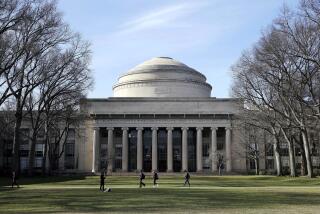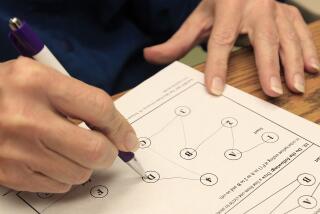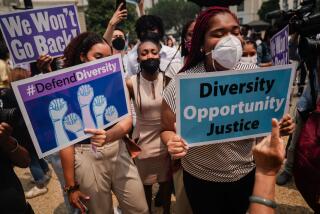Blaming Tests Won’t Close the Gap
- Share via
At the core of the affirmative action debate surrounding Proposition 209, the “California civil rights initiative,” is the question of whether merit standards traditionally used by universities and companies are racially biased against blacks and other minorities. If tests are racially or culturally biased, after all, then merit-based entitlements become suspect, and an argument can be made for allocating social goods according to other criteria, such as proportional distribution between racial groups.
Opponents of Proposition 209 have vehemently contested the validity of traditional merit standards, especially at the college and university level. According to Richard Seymour of the Lawyers’ Committee for Civil Rights Under Law, standardized tests widely used for college admissions and employment are an “engine for the exclusion of minorities.” African American writer Ellis Cose argues that such tests promote “the myth of meritocracy.” Consequently, civil rights activists support racial preferences to remedy what they perceive as unjust discrimination.
In 1994, the Chicago Police Department announced that of the 500 candidates who scored highest on its sergeant’s exam, only 40 were black and 22 were Latino. Immediately, Rep. Bobby Rush (D-Ill.), an African American, charged that “structurally the test was biased.” Rush hadn’t seen the test. The city of Chicago had spent more than $5 million to produce, in collaboration with minority consultants, a bias-free test. Yet critics assumed that in a city that is more than 50% minority, test results that do not mirror the population must be racially biased.
A few years ago, I asked an admissions officer at the University of California at Berkeley to estimate the probability of acceptance for a black or Latino student with a B-plus high school average and an SAT score of 1,200 out of 1,600. He said the chances that such a student would be admitted to Berkeley were virtually 100%. By contrast, he acknowledged that a white or an Asian student with the same grades and test scores, and the same extracurricular talent, would only have a 5% chance of getting into Berkeley. The official justified such preferences on the grounds that tests systematically “discriminate” against Latino and black students.
To examine whether standardized tests are unfair, let us consider two of the most widely used examinations: the General Aptitude Test Battery (GATB), administered by state employment agencies and used for millions of job referrals, and the Scholastic Assessment Test (SAT), conducted by the Educational Testing Service and considered by the vast majority of colleges for undergraduate admission.
In the past two decades, hundreds of studies have been conducted to assess how well standardized tests such as the SAT and the GATB predict performance, and whether such tests are biased against minorities. These studies have produced results that are so unanimous that they are considered definitive in the academic community.
The SAT turns out to be a very good predictor of college performance, much better than such measures such as high school grades, whose significance depend on the school, and interviews and recommendations, which are highly subjective. Similarly, a review by industrial psychologists John Hunter and Frank Schmidt of many studies of the GATB showed that the test effectively predicts job performance, as measured by independent criteria such as supervisor ratings or on-the-job evaluations.
Yet in order to survive charges of bias, tests such as the SAT and GATB must prove to be equally predictive for whites, blacks and other minorities. Critics such as David Owen, author of “None of the Above,” have scoured years of test questions to produce examples that seem to indicate bias. Certainly it is hard to deny Owen’s suggestion that blacks and those who live in the inner city are less likely to be familiar with terms like “sonata” and “regatta” than whites who grow up in the suburbs.
In recent years, those who administer standardized tests have labored strenuously to avoid such culturally loaded terms. But put aside for a moment the verbal section of the test, which contains a high proportion of cultural content, and concentrate only on the math section. Hardly anyone has seriously maintained that equations are racially biased or that algebra is rigged against minorities. Nevertheless, data from the College Board show that the racial gaps that are evident on the verbal section of the test are, year after year, equaled or exceeded on the math section.
As psychologist Lyle Jones argues, tests do not create discrepancies of ability and performance; they merely measure them. The solution is not to fault the messenger who brings unwelcome news or to rig the outcome of tests to satisfy race-based goals and timetables, but rather to directly confront the root causes of our social problems, such as broken families and terrible public schools, that produce underachievement and group disparities.
More to Read
Get the L.A. Times Politics newsletter
Deeply reported insights into legislation, politics and policy from Sacramento, Washington and beyond. In your inbox twice per week.
You may occasionally receive promotional content from the Los Angeles Times.










